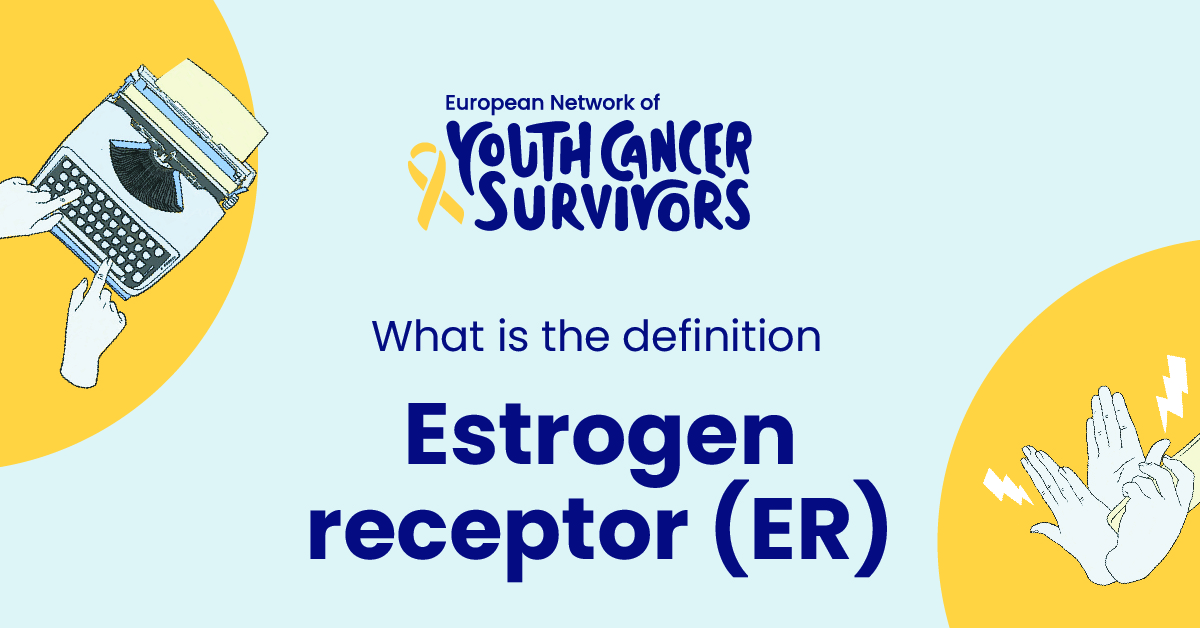
Understanding the intricate biological systems of the human body can be a complex but fascinating journey. One of these crucial systems is the relationship of hormones and their receptors, a primary factor that influences body functions and impacts human health.
Of particular importance is the interaction between Estrogen, the primary female sex hormone, and its receptors (ER). This interaction plays a crucial role in vital bodily processes, affecting everything from the reproductive system to bone health.
Setting the Context: Hormones and their Receptors
Hormones act as messengers in the body, signaling cells and tissues to perform certain functions. They bind to specific areas on the cells called receptors, similar to a lock and key mechanism.
These hormone-receptor interactions are vital for maintaining homeostasis and overall health, influencing biological processes such as growth, metabolism, and reproduction. We will now dive deep into the intricacies of one such hormone-receptor pair, the Estrogen and its receptor.
Brief Overview of Estrogen: The Female Sex Hormone
Often referred to as the ‘female sex hormone’, estrogen plays a crucial role in the development of female secondary sexual characteristics. This hormone is also present in males, albeit in lesser amounts, and contributes to sperm production and bone health.
Estrogen operates by binding with specific estrogen receptors (ERs) located within cells, thereby triggering cellular functions. Let’s delve deeper into exactly what these ERs are and how they function.
Definition of Estrogen Receptor (ER)
Detailed Explanation of Estrogen Receptor (ER)
Estrogen receptors (ERs) are proteins within cells, specifically designed to bind with estrogen. Upon binding, they act as transcription factors, regulating gene expression and influencing cellular functions such as cell growth and proliferation.
There are two primary types of estrogen receptors, ER-alpha, and ER-beta, each serving different functions across various tissues.
Functions and Roles of ER in the Human Body
The roles of ER are diverse and vital within the human body. These receptors are essential for several physiological functions, including the regulation of the female reproductive system, the development and strength of the skeletal system, and cardiovascular function, to name a few.
In essence, ERs serve as the ‘gateway’ through which estrogen exerts its influence on the human body.
Get to know us better
If you are reading this, you are in the right place – we do not care who you are and what you do, press the button and follow discussions live

The Structure of Estrogen Receptors
ER-alpha and ER-beta: Understanding the Difference
ER-alpha and ER-beta, although genetically and structurally similar, have different functional roles. ER-alpha primarily influences cell growth and proliferation, particularly in the mammary gland and uterus. ER-beta, on the other hand, operates within the central nervous system, cardiovascular system, and lungs.
The differences in the distribution of these receptors within the body have significant implications for health and disease.
The Significance of the Binding Site of ER
The binding site of ER is essential in its interaction with estrogen. Steroidal ligands like estrogen bind to these sites, triggering a change in the receptor’s conformation, enabling it to regulate gene expression.
The precise nature of this interaction between the hormone and its receptor can greatly impact its physiological effects.
Importance of ER in Human Physiology
Role of ER in Female Reproductive System
The estrogen receptor plays a pivotal role in the female reproductive system. It helps regulate the menstrual cycle, controls the growth of the uterine lining during the first part of the menstrual cycle, and prepares the body for pregnancy.
The interaction between estrogen and its receptor is not only essential for female fertility but also impacts sexual behavior and other secondary sexual characteristics.
Influence of ER on Bone Health
Estrogen receptors are critical for maintaining bone health. They help control bone density by regulating the balance between bone formation and resorption, keeping our bones strong and healthy throughout life.
A decrease in estrogen levels as seen in menopause can trigger bone loss, highlighting the vital role these receptors play in maintaining bone health.
Other Key Roles of ER in the Body
ERs also play significant roles in the cardiovascular system, enhancing arterial flexibility and reducing plaque formation. Furthermore, they help maintain skin tone and texture, regulate body temperature and enhance cognitive functions.
Clearly, the functions of estrogen receptors extend far beyond just reproductive health.
ER and its Implication in Disease Condition
ER and Breast Cancer: The Connection
Estrogen receptors play a vital role in the development of some forms of breast cancer. ER-positive breast cancers grow in response to estrogen. This understanding has led to the development of therapies that block or reduce the production of estrogen, thereby controlling the growth of these tumors.
Therefore, the ER status of a tumor can guide the selection of suitable therapies in breast cancer treatment.
Role of ER in Osteoporosis
As mentioned earlier, ER plays a crucial role in maintaining bone health. A deficiency in estrogen, as observed in post-menopausal women, can trigger osteoporosis, a condition characterized by porous, fragile bones.
Thus, therapies that target estrogen receptors are employed in the management and treatment of osteoporosis.
ER and Cardiovascular Diseases
ERs influence the overall cardiovascular health by regulating blood pressure, inflammation and plaque formation. Dysfunction of this hormone-receptor interaction can lead to cardiovascular diseases.
Thus, ER and its interaction with estrogen are crucial in maintaining cardiovascular health, and aberrations in these may contribute to cardiometabolic disorders.
Therapeutic Implications and Drugs Targeting ER
Popular Medications That Target ER
Given the critical role ERs play in various disease conditions, many drugs target these receptors. In breast cancer, for instance, drugs like Tamoxifen and Raloxifene block estrogen’s ability to bind to ER, inhibiting tumor growth. In osteoporosis, hormone replacement therapy involving estrogen helps restore bone density.
These therapeutic interventions underscore the vital role that ER plays in human health and disease.
The Effectiveness of These Drugs in Treating Diseases
Drugs targeting ER have proven effective in managing and treating various conditions. In breast cancer, ER-targeting drugs have improved survival rates and reduced recurrence. In osteoporosis, they have helped slow down bone loss and decrease fracture risks.
Through a better understanding of the roles of ERs, researchers can develop more targeted and effective drugs to address these health conditions.
Conclusion
Summary of Key Points
Estrogen receptors serve as a critical link in the signaling pathway of one of the most important hormones in the human body. Understanding their structure, function, and roles they play in our body’s physiology is essential for understanding many aspects of human health and disease.
The implications of ERs in disease conditions like breast cancer and osteoporosis have paved the way for the development of effective therapeutics that target these receptors.
Relevance of ER in Modern Medical Science
Understanding the roles and implications of ERs in health and disease is significant for modern medical science. This knowledge not only helps us comprehend the biochemical machinery of our bodies but also aids in the development of effective, targeted therapies for a range of diseases.
So, in conclusion, Estrogen receptors, small as they may be, serve a critical function in the grand scheme of human health, reaffirming the credo that ‘small is indeed mighty’.
FAQs:
1. What is the key function of Estrogen Receptors?
Estrogen Receptors (ERs) are proteins within cells that bind to estrogen and act as transcription factors, regulating gene expression. They play vital roles in regulating body functions such as the female reproductive system, bone health, and cardiovascular function.
2. How does the Estrogen Receptor influence female reproduction?
The estrogen receptor plays a crucial role in the female reproductive system. It regulates the menstrual cycle, controls the growth of the uterine lining, and prepares the body for pregnancy.
3. What is the connection between ER and diseases like breast cancer?
Some forms of breast cancer grow in response to estrogen. These ER-positive breast cancers can be treated by therapies aimed at blocking or reducing the production of estrogen, and thus inhibiting tumor growth.
4. Are there drugs that specifically target Estrogen receptors?
Yes, several drugs target estrogen receptors. Tamoxifen and Raloxifene, for example, are used in the treatment of ER-positive breast cancers, while hormone replacement therapies involving estrogen are used in osteoporosis treatment.
5. How does an understanding of ER contribute to advancements in modern medical science?
Understanding the roles and implications of ERs in health and disease is significant for modern medical science. It aids in the development of effective, targeted therapies for a range of diseases, making it an integral part of medical research and therapeutic advancements.

















Comments
Thank you. Comment sent for approval.
Something is wrong, try again later